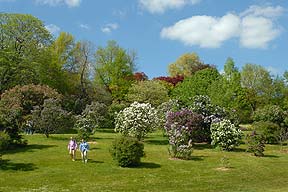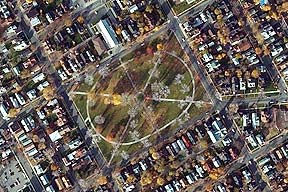The "Emerald Necklace" of Parks
Rochester's park system owes a great debt to Frederick Law Olmsted (April 26, 1822 – August 28, 1903), often called the father of American landscape architecture. Rochester is fortunate to be one of a handful of American cities that have a park system designed by the most revered landscape architect in American history.
After he was hired by the City's first Parks Commission in 1888 to turn generous donations of land into an exceptional urban park system, Olmsted immediately focused on Rochester's gorgeous waterways. He continually urged City leaders to concentrate on acquiring land along the Genesee River, with the goal of preserving its varied scenery from industrial development. Olmsted's designs took advantage of the diverse landscape effects created by the river's course through the city, from the rolling topography south of downtown, which he called a “nearly ideal” site in which to realize his vision of a “pastoral” landscape, to the steep rugged gorge banks to the north, where he envisioned a park in his “picturesque” style. He designed what he called an "emerald necklace" of parks and gardens along the Genesee River, from the Erie Canal to Lake Ontario. 
Olmsted's designs resulted in what is now Genesee Valley Park, Highland Park, Seneca Park, and Maplewood Park. Today, these parks remain outstanding examples of Olmsted's pastoral designs.
Olmsted, who also designed New York's Central Park, went on to design some of Rochester's smaller neighborhood parks, such as Jones Square and Brown Square.